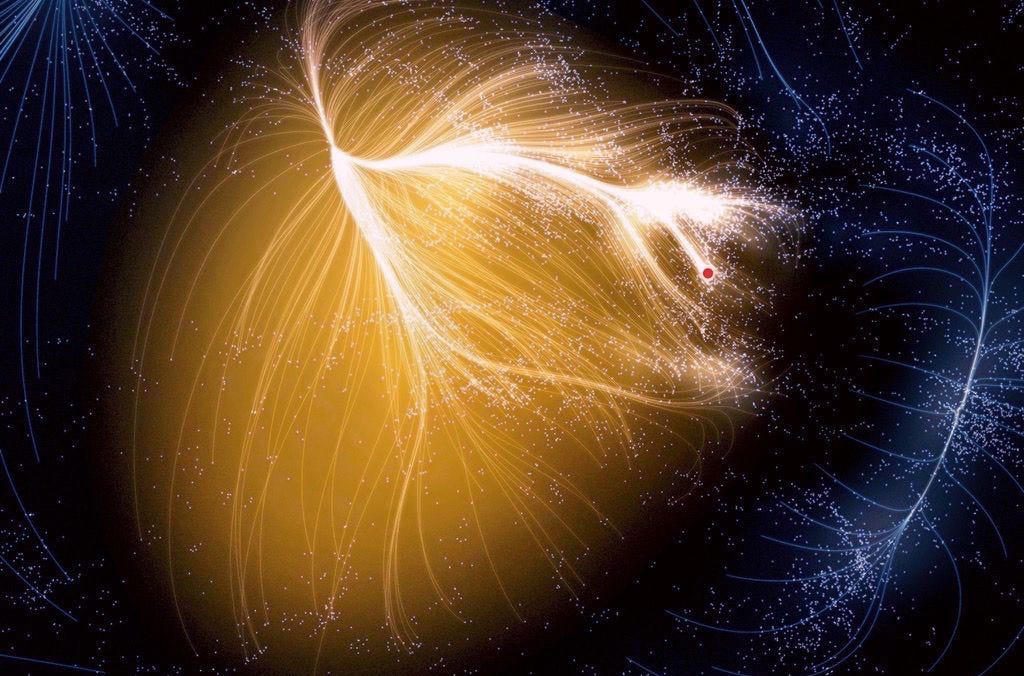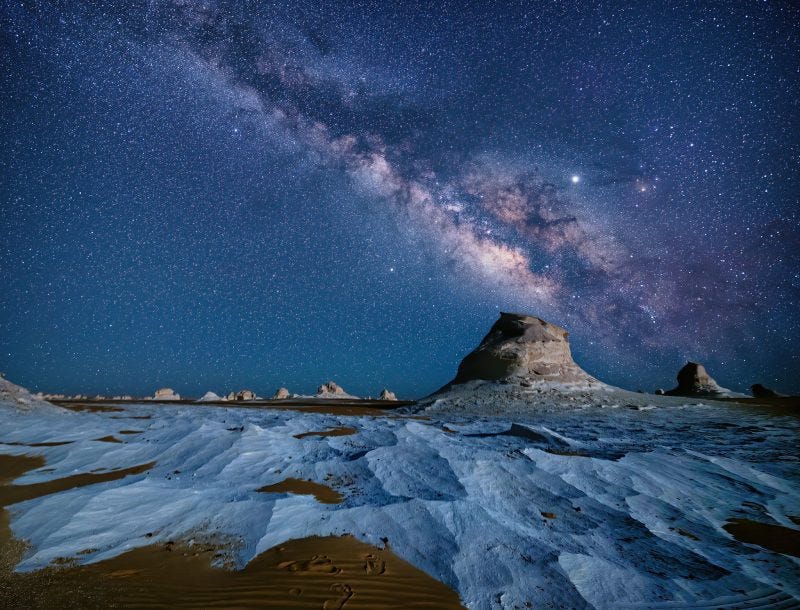
Note to Readers — If you are a paid Core, Backstage or Galaxy member, you can find your new horoscope and article on the My Account area on Planet Waves.
If this particular email says that you’re a “free subscriber,” that does not apply to you since you pay directly through us. You can safely ignore that; the two systems are not integrated and don’t talk to one another.
To Substack subscribers, the horoscope is linked to an open Planet Waves page right below the paywall; I don’t have it in me to make another page tonight.
Safe and sane travels, wherever they may take you, With love — efc
Dear Friend and Reader:
I’m here today to get you excited about Sagittarius, which the Sun entered Wednesday. Though deep space points appear many places chartable on a zodiac wheel, Sagittarius is special. In a sense, it’s where we all live, in the cosmic sense. There are two enormous beacons there, helping us orient on where we are and remind us of our direction of travel while we are here.
Speaking of — in the Esoteric Astrology approach of Alice A. Bailey, Sagittarius is ruled by (directly associated with) the Earth.
It’s amazing how recent is humanity’s knowledge of deep space. It was only in 1924 that astronomer Edwin Hubble informed the world that what was thought of as a “spiral nebula” called Andromeda was actually a galaxy, and that the Milky Way is just one of many galaxies in the universe.
Then on May 5, 1933, The New York Times announced that the core of the Milky Way was emitting “mysterious static,” which was different from “cosmic rays.” The direction of origin: about 26 degrees into the sign Sagittarius.
In 1954, John D. Kraus and his collaborators identified the radio sources at the center of the galaxy, and named the brightest one Sagittarius A* (pronounced “Sagittarius A-star”).

A Black Hole is at the Center
By 2020, Reinhard Genzel and Andrea Ghez received the Nobel Prize on Physics for determining that the concentrated, compact matter of Sagittarius A* had to be a supermassive black hole (long speculated as such; I was surprised confirmation was so recent).
Note that most astrophysicists agree that the black hole at the center of our galaxy (or any other) cannot be what is holding together 300 billion stars in a lovely spiral. It’s not supermassive enough; there’s not enough gravity, but A* forms a kind of nucleus. There has to be something else maintaining the structure of our galaxy.
Hence, there is speculation that such a substance is "dark matter.” People get bent up about this, since currently the idea is speculative and hypothetical — but it’s an attempt to describe a real phenomenon; a kind of placeholder.
However, I’m not just here to regale you with the history of astrophysics, fun as it is (approximately billions of times more fun than virology).
Listen to this episode with a 7-day free trial
Subscribe to Planet Waves by Eric Francis to listen to this post and get 7 days of free access to the full post archives.













